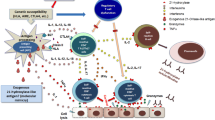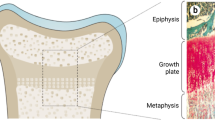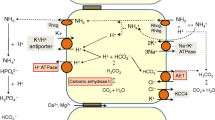Abstract
Nephronophthisis, an autosomal recessive kidney disease, represents the most frequent genetic cause of end-stage kidney disease in the first three decades of life. A 27-year-old male was presented with gait imbalance, sever pruritus since 10 days prior time of admission. In past medical history, he had bilateral cataract, torsional nystagmus, and bilateral optic nerve atrophy since 2 years of age. He was also mentioned history of multinodular goiter with dysfunctional thyroid state since 2 years before admission. At admission bilateral blindness, torsional nystagmus, asymmetric thyromegaly with nodularity was found in physical examination. Laboratory tests showed elevated urea and creatinine (200, 10.7 mg/dl), hypomagnesemia (1.1 mEq/l), decreased thyroid stimulating hormone (<0.004 mIU/l). Ophthalmologist consultation confirmed retinitis pigmentosa. Renal sonography showed small-sized kidneys. Brain magnetic resonance imaging did not reveal molar tooth sign. Genetic testing performed and a large homozygous deletion at the NPHP1 gene locus was found. The patient was diagnosed with juvenile nephronophthisis and consideration of dysthyroidism as extrarenal manifestation of nephronophthisis is suggested in this case. Furthermore, loss of function mutation in SLC41A1 gene that leads to magnesium depletion must be noted in patients with suspected to nephronophthisis.


Similar content being viewed by others
References
Salomon R, Saunier S, Niaudet P. Nephronophthisis. Pediatr Nephrol. 2009;24(12):2333–44.
Benzing T, Schermer B. Clinical spectrum and pathogenesis of nephronophthisis. Curr Opin Nephrol Hypertens. 2012;21(3):272–8.
Hurd TW, Hildebrandt F. Mechanisms of nephronophthisis and related ciliopathies. Nephron Exp Nephrol. 2011;118(1):e9–14.
Krishnan R, Eley L, Sayer JA. urinary concentration defects and mechanisms underlying nephronophthisis. Kidney Blood Press Res. 2008;31:152–62.
Simms RJ, Eley L, Sayer JA. Nephronophthisis. Eur J Hum Genet. 2009;17(4):406–16.
Chaki M, Hoefele J, Allen SJ, Ramaswami G, Janssen S, Bergmann C, et al. Genotype–phenotype correlation in 440 patients with NPHP-related ciliopathies. Kidney Int. 2011;80:1239–45.
Wolf MTF. Nephronophthisis and related syndromes. Curr Opin Pediatr. 2015;27(2):201–11.
Wolf MTF, Hildebradnt F. Nephronophthisis. Pediatr Nephrol. 2011;26(2):181–94.
Zimmermann KW. Beitrage zur Kenntnis einiger Drusen und Epithelien. Arch mikrosk Anat. 1898; 52:552–706.
D′angelo A, Franco B. The dynamic cilium in human diseases. PathoGenetics. 2009;2(3):1–15.
Bowser Labs, Aberdeen. http://www.browserlab.org/primarycilia/cilialist.html.
Hildebrandt F, Zhou W. Nephronophthisis—associated ciliopathies. J Am Soc Nephrol. 2007;18(6):1855–71.
Kolisek M, Nestler A, Vormann J, Schweigel-RÓ§ntgen M. Human gene SLC41A1 encodes for the Na+/Mg2+ exchanger. Am J Physiol Cell Physiol. 2012;302(1):C318–26.
Hurd TW, Otto EA, Mishima E, Gee HY, Inoue H, Inazu, et al. Mutation of the Mg2+ transporter SLCA41A1 results in a nephronophthisis-like phenotype. J Am Soc Nephrol. 2013;24(6):967–77.
Kolisek M, Sponder G, Mastrototaro L, Smorodchenko A, Launay P, Vormann J, et al. Substitution p.A 350 v in Na+/Mg2+ exchanger SLC41A1 potentially associated with Parkinson’s disease, is a gain of function mutation. PLoS One. 2013;8(8):1–11.
Simms RJ, Hynes AM, Eley L, Sayer JA. Nephronophthisis: a genetically diverse ciliopathy. Int J Nephrol. 2011;2011:3–10.
Castori M, Valente EM, Donati MA, Salvi S, Fazzi A, Procopio E, et al. NPHP1 gene deletion is arare cause of joubert syndrome related disorders. J Med Genet. 2005;42:9.
Parisi MA. Clinical and molecular features of joubert syndrome and related disorders. Am J Med Genet C Semin Med Genet. 2009;151:326–40.
Soliman NA, Hildebrandt F, Otto EA, Nabhan MM, Allen SJ, Badr AM, et al. Clinical characterization and NPHP1 mutations in nephronophthisis and associated ciliopathies: a single center experience. Saudi J Kidney Dis Transpl. 2012;23:1090–8.
Incecik F, Herguner MÖ, Altunbasak S, Gleeson JS. Joubert syndrome: report of 11 cases. Turk J Pediatr. 2012;54:605–11.
Parisi MA, Bennett CL, Eckert ML, Dobyns WB, Gleeson GS, Shaw DWW, et al. The NPHP1 gene deletion associated with juvenile nephronophthisis is present in a subset of individuals with joubert syndrome. Am J Hum Genet. 2004;75:82–91.
Maria BL, Quisling RG, Rosainz LC, Yachnis AT, Gitten J, Dede D, et al. Molar tooth sign in joubert syndrome: clinical, radiologic, and pathologic significance. J Child Neurol. 1999;14:368–76.
Hildebrandt F, Attanasio M, Otto E. Nephronophthisis: disease mechanism of a ciliopathy. J Am Soc Nephrol. 2009;20(1):23–35.
Arts HH, Knoers NV. Current insights into renal ciliopathies: what can genetics teach us? Pediatr Nephrol. 2013;28(6):863–74.
Renkema KY, Stokman MF, Giles RH, Knoers NV. Next-generation sequencing for research and diagnostics in kidney disease. Nat Rev Nephrol. 2014;10(8):433–44.
Vivante A, Hildebrandt F. Exploring the genetic basis of early-onset chronic kidney disease. Nat Rev Nephrol. 2016;12(3):133–46.
Gee HY, Otto EA, Hurd TW, Ashraf S, Chaki M, Cluckey A, et al. Whole exome resequencing distinguishes cystic kidney diseases from phenocopies in renal ciliopathies. Kidney Int. 2014;85(4):880–7.
Acknowledgements
We thank the patient and his relatives for their special cooperation.
Author information
Authors and Affiliations
Corresponding author
Ethics declarations
This article does not contain any studies with animals performed by any of the authors.
Conflict of interest
The authors declare no conflict of interests.
Informed consent
Informed consent was obtained from all individual participants included in the study.
About this article
Cite this article
Amiri, F.S., Kariminejad, A. Juvenile nephronophthisis and dysthyroidism: a rare association. CEN Case Rep 6, 98–104 (2017). https://doi.org/10.1007/s13730-017-0252-7
Received:
Accepted:
Published:
Issue Date:
DOI: https://doi.org/10.1007/s13730-017-0252-7




